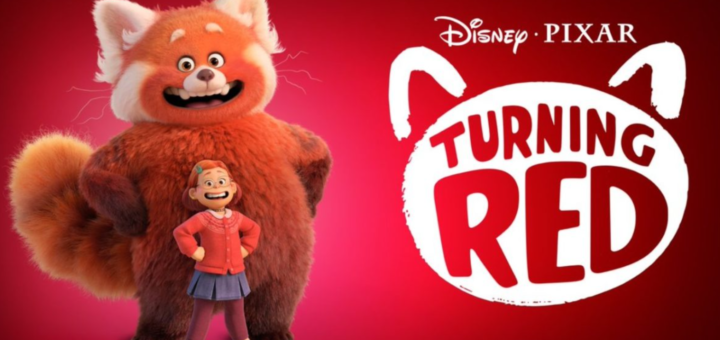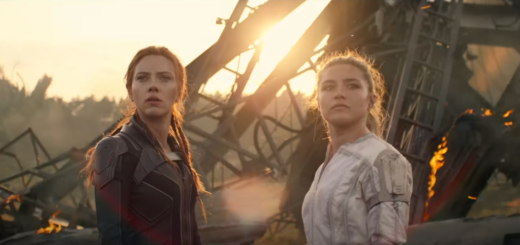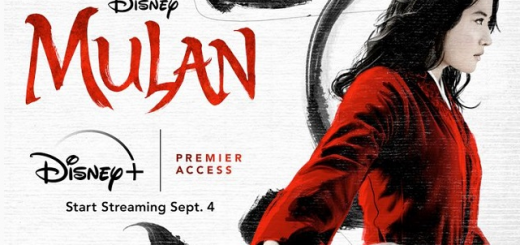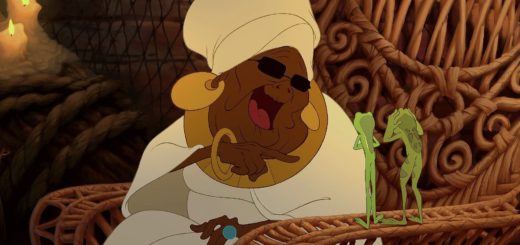MickeyBlog Movie Review: Turning Red
In 2012, Pixar branched out with its strongest female-centric film to date, Brave.
The heroine in that film, Merida, has inspired an entire generation of women. Honestly, the movie is more of a double than a home run, though.
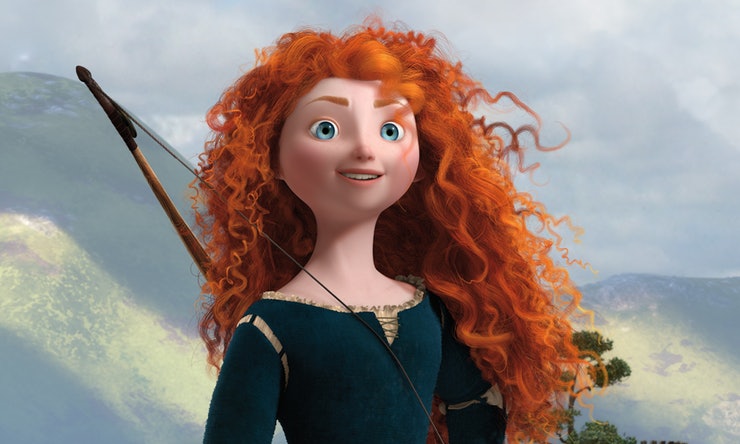

Now, a decade later, Pixar is trying again with another title, and it may have surpassed Inside Out as the best movie for girls ever.
Here’s my glowing review of Turning Red, the kind of movie that will remind you why Pixar holds such a special place in your heart.
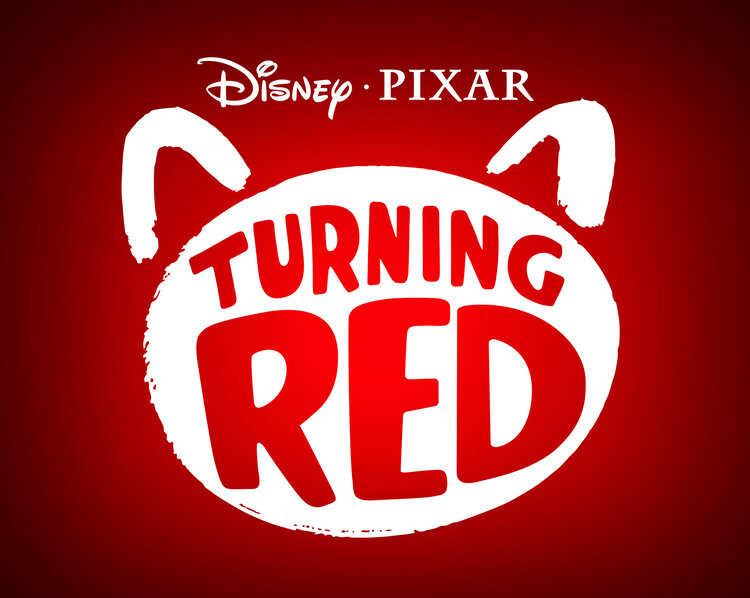

Image: Disney/Pixar
What Is Turning Red?
During the pandemic, Disney and Pixar have quietly gone on a run of exceptional films.
Ignoring Marvel Cinematic Universe titles, Disney+ subscribers have had their choice of Mulan, Cruella, Jungle Cruise, Soul, Luca, and Encanto.


That’s a startlingly deep and contrasting batch of titles, each of which has at least briefly captured the attention of fans around the world.
The Encanto phenomenon rivals Frozen in terms of potency and lasting appeal.


Source: Disney
So, my expectations for Turning Red increased after Disney’s recent hot streak.
This story centers on a dutiful 13-year-old named Mei Lee, who lives an idyllic existence in Toronto, Ontario, Canada.
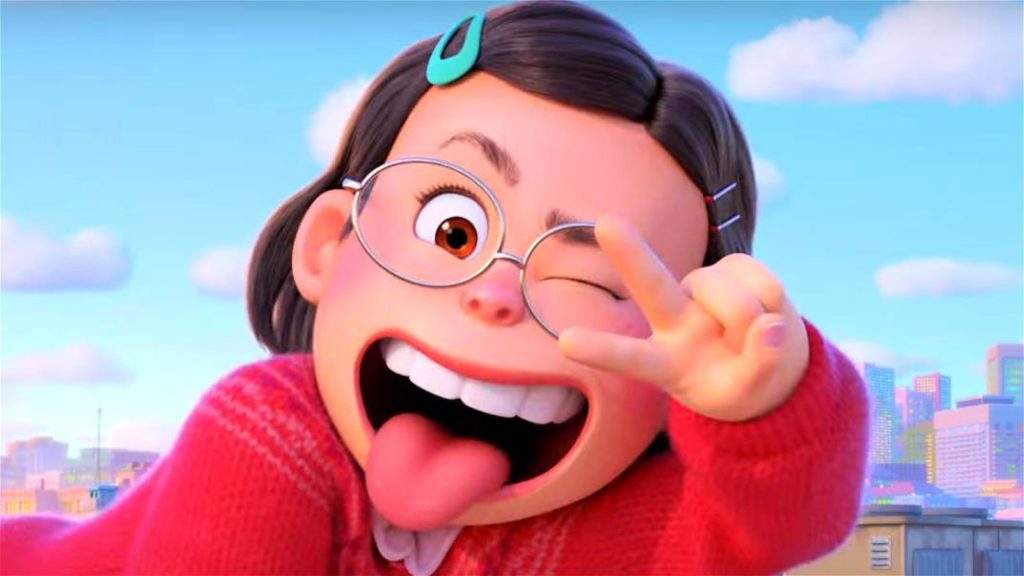

Mei’s the type of kid who gets straight A’s and does everything her parents say. On paper, she sounds like the cliched straight-laced good girl trope in movies.
However, even early in the film, Mei displays several characteristics that identify she’s well on the way to becoming her own person somewhere down the line.
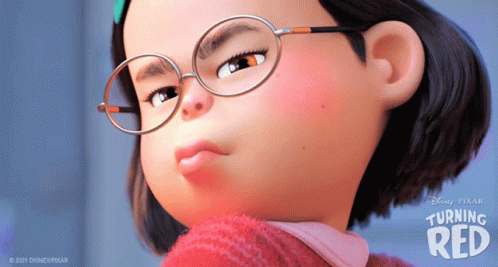

Mei has strong opinions about friendship and Y2K and math and boy bands.
She’s formed these conclusions thanks to her parents and her buddies: Abby, Miriam, and Priya.
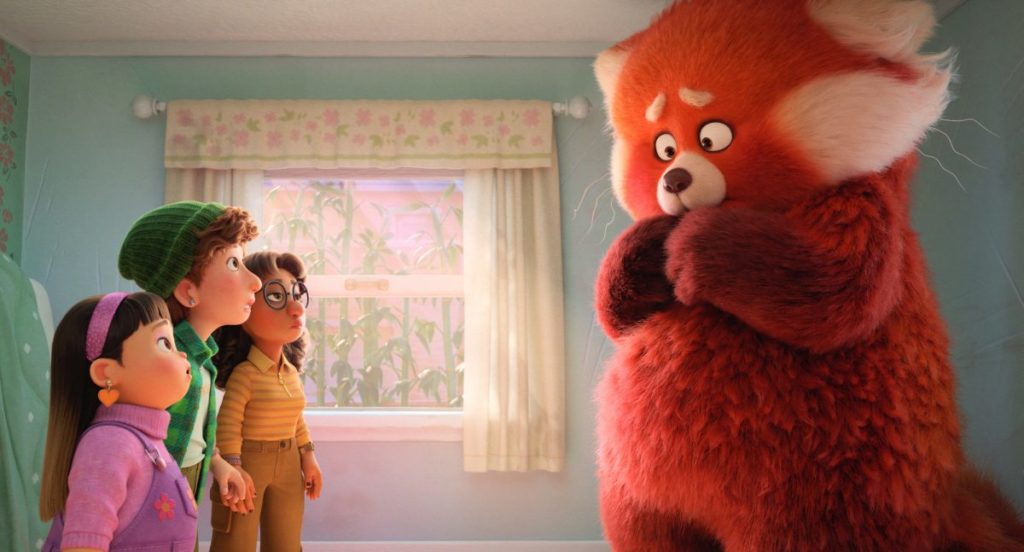

Sure, they think she’s a brainwashed drone due to her relationship with her parents, but they adore her anyway.
Outsiders can tell that Mei’s mother, Ming Lee, is domineering even though she means well.
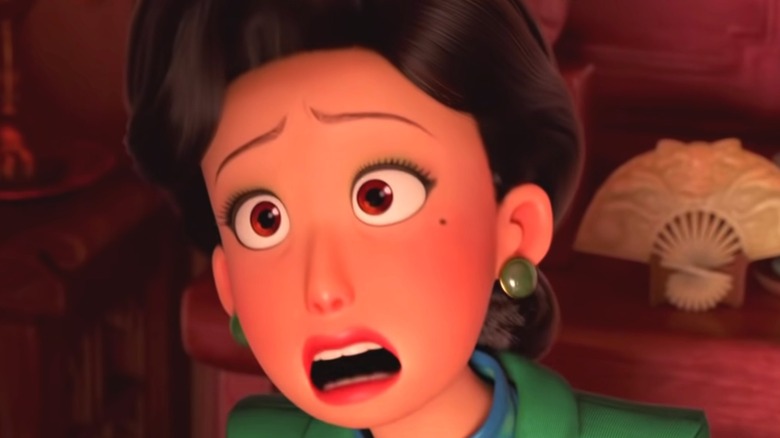

Meanwhile, Mei’s kindly father, Jin Lee, cedes to Ming on most parental issues.
In other words, Turning Red tells the story of a Chinese-Canadian family at the turn of the 21st century.
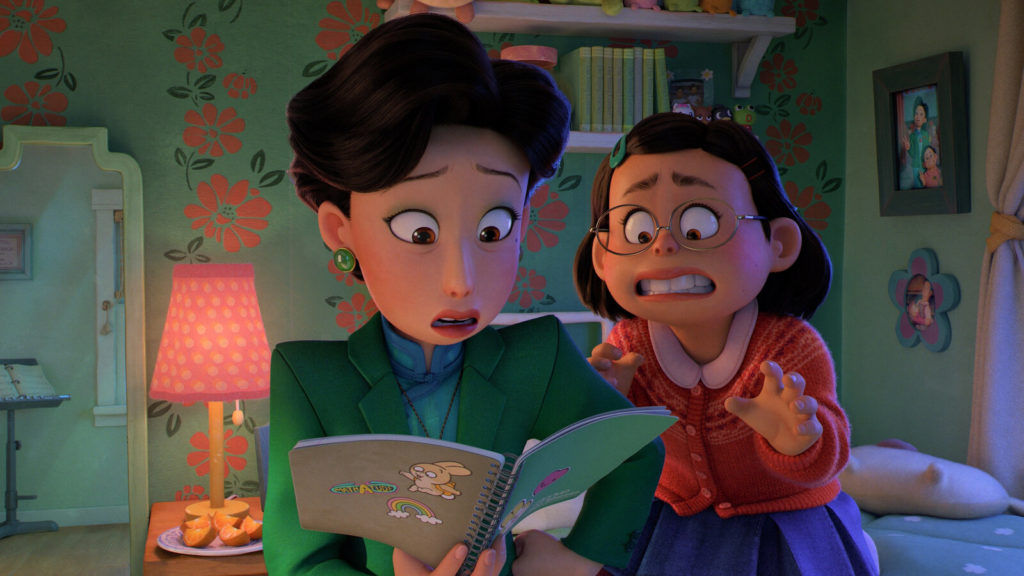

Then, something happens that upends all of Mei’s structures and beliefs.
Mei turns into a giant red panda, an impossibly fluffy, kawaii one. Yeah, it’s weird.
Mei literally turns red.
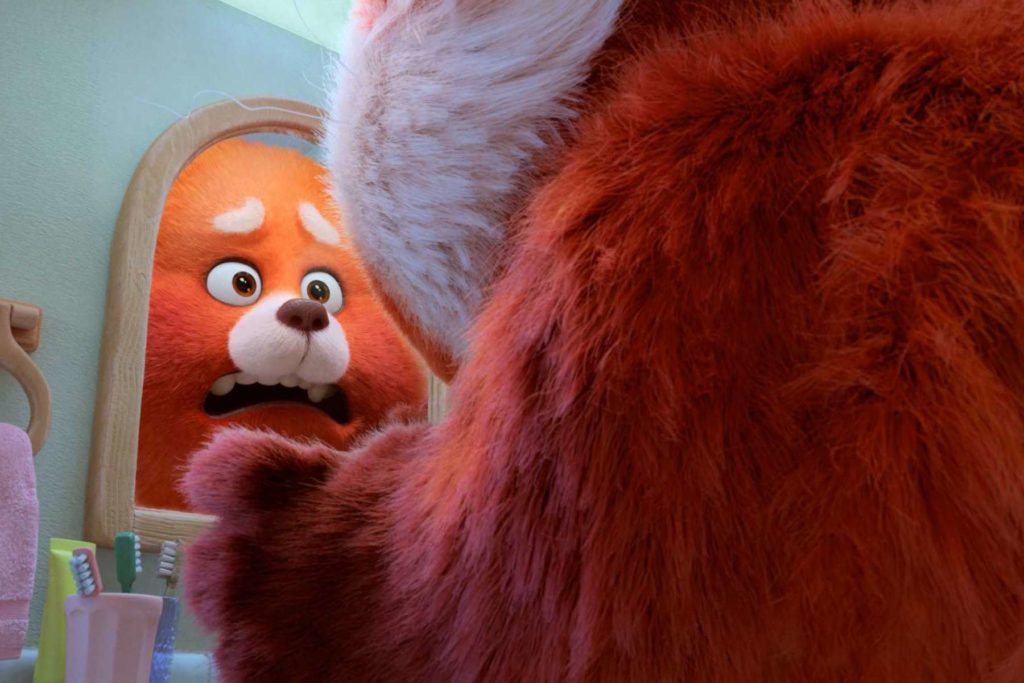
What’s the Story of Turning Red?
Naturally, Mei seeks to hide this behavior from her friends and family members. Early on, we can tell that this story centers on identity and self-worth.
Since Mei is 13, she’s the perfect age to go on a voyage of self-discovery, one in which she starts to question everything about who she is.
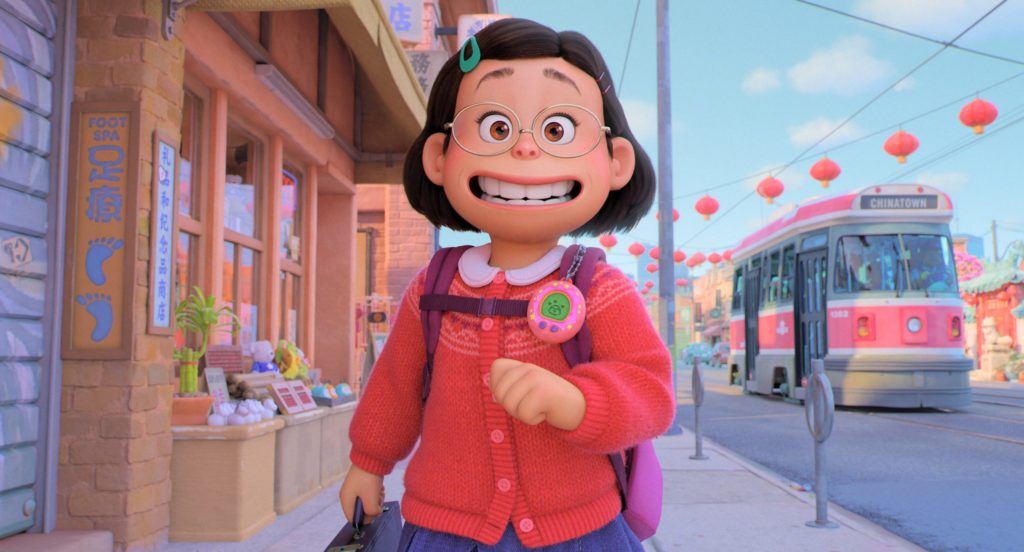

Her journey takes her into many weird places, including one instance where she literally looks in a mirror and debates who she wants to be.
I’m not giving anything away that’s not in the trailer by saying that Mei doesn’t keep her secret well.
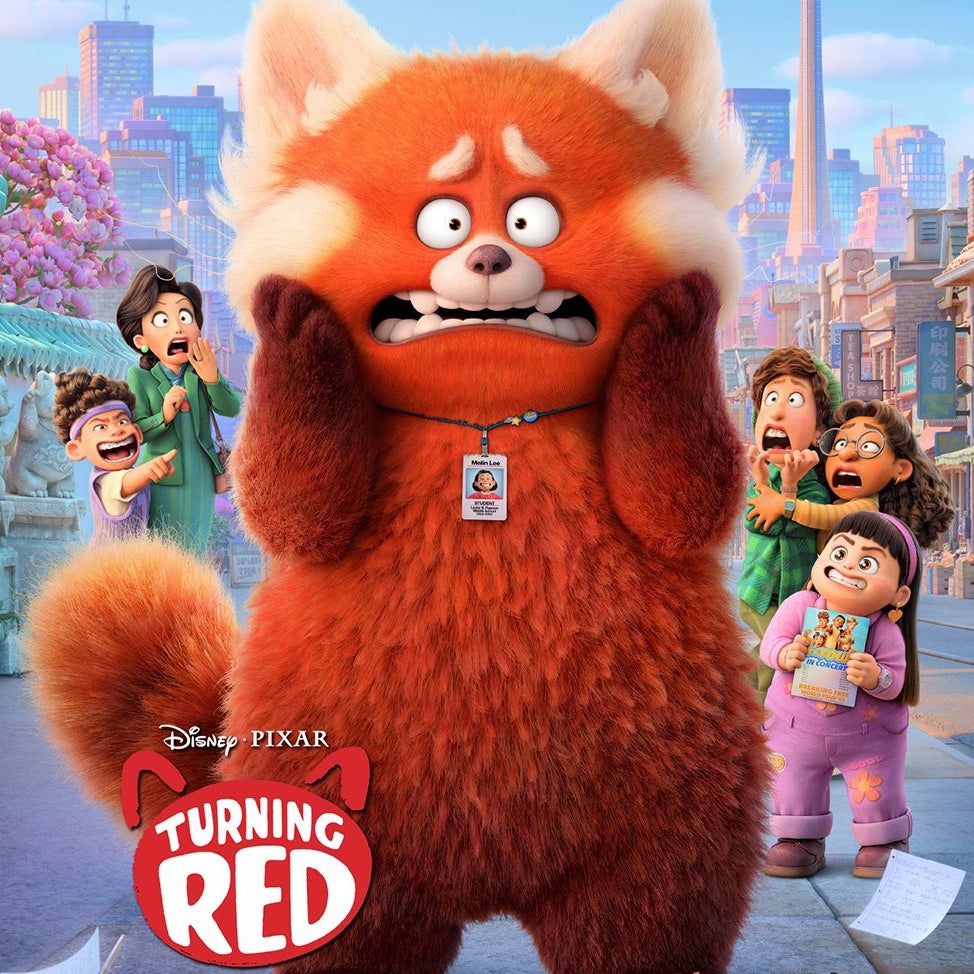

This isn’t a Bruce Wayne/Batman situation. It’s more of a Clark Kent/Superman scenario if everyone at The Daily Planet weren’t an idiot.
Just like world-class reporters should recognize a dude even if he’s wearing glasses, people can tell it’s Mei even when she’s a giant red panda.
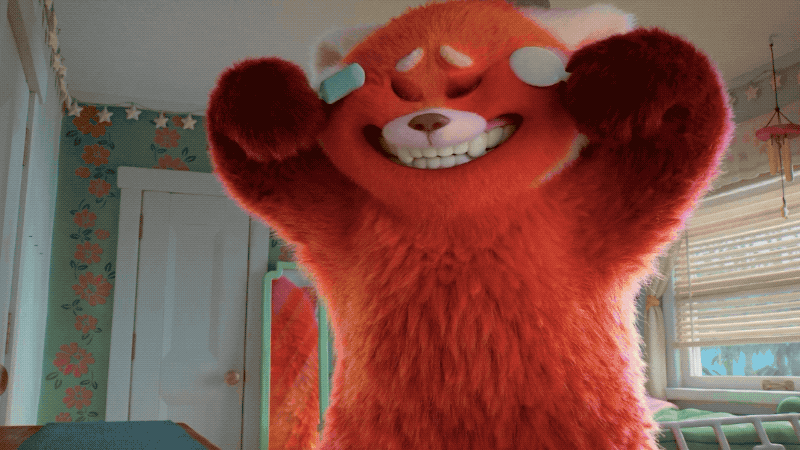

Pixar isn’t selling a mystery about the identity of the unknown fur beast. Instead, it’s a story about whether a girl can walk her own path without alienating her parents.
For that matter, Mei’s relationship with her classmates and closest friends suffers some hiccups, too.
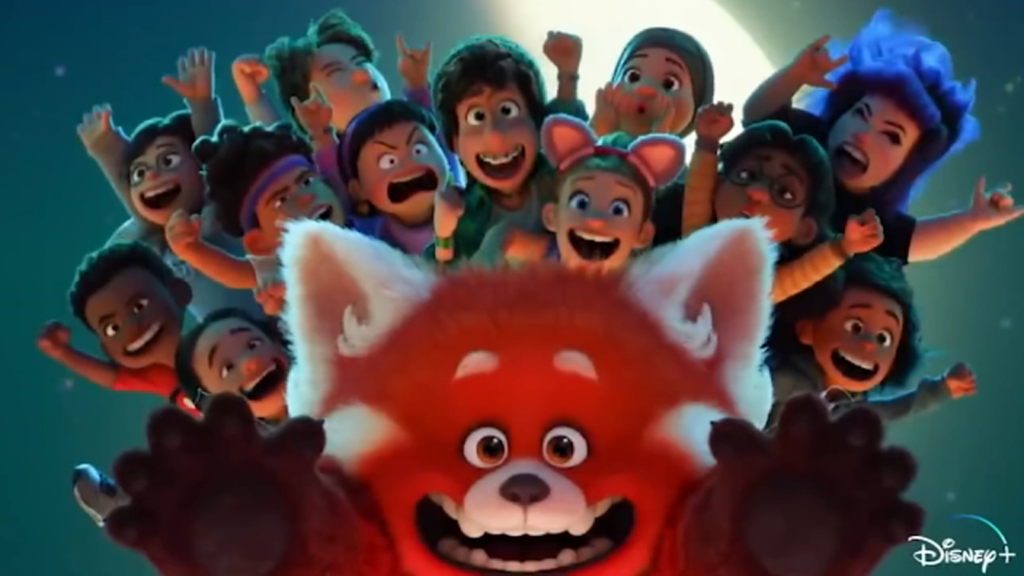

I mean, you’d freak out if someone you know suddenly entered a literal beast mode, right?
In fact, as I type this, I recognize that there was a 1980s movie with a similar premise: Teen Wolf.
No, I’m not including the supernatural MTV reboot of it decades later, just the one where adorable little Michael J. Fox shot free throws even when he was a werewolf.
Mei even experiences a similar moment, only in dodgeball.
So, yes, the whole thing is a metaphor for puberty, but that glib interpretation diminishes how tender Turning Red is.
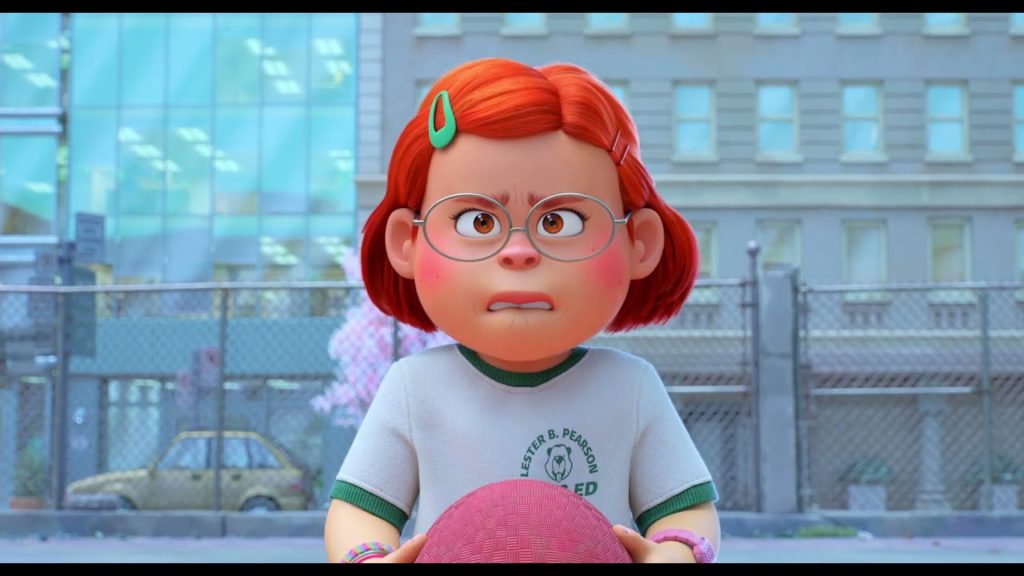
What Works and Doesn’t Work in Turning Red?
Mei is in virtually every scene of this movie. Everything hinges on whether you love the character or not.
I honestly cannot imagine anyone not loving Mei, though. She’s so earnest and strong-minded.
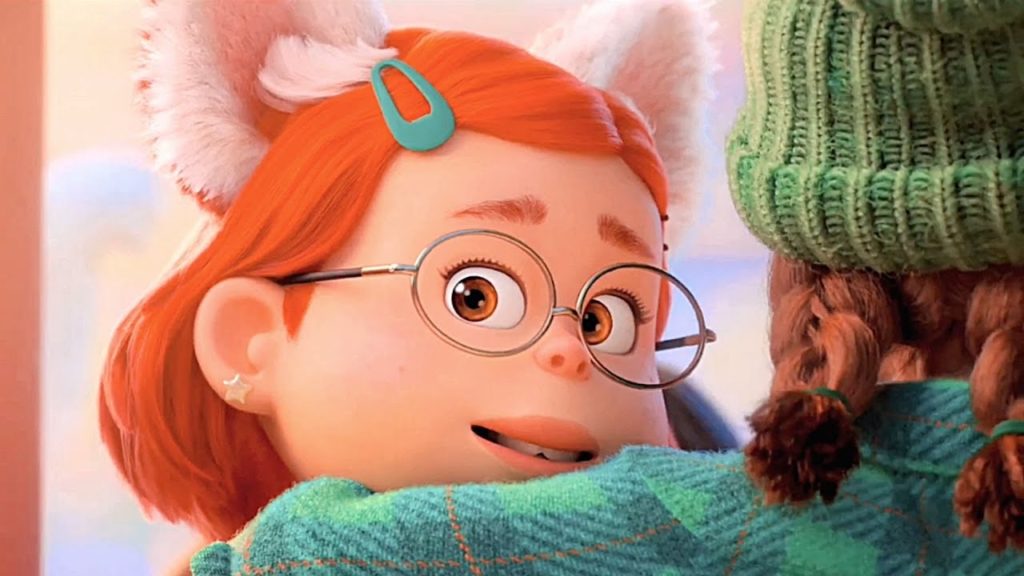

However, Mei is also a tween bordering on teen girl. And the setting of this film reinforces that fact.
Mei’s favorite band is the fictional 4*Town, a knockoff on the Backstreet Boys and all the other boy bands that dominated the charts during the 1990s.
When Mei learns that they’re coming for a concert, she and her friends embark on a plan to attend. But, alas, the tickets cost $200 each, which is more than the girls have.
They strategize on the best ways to earn money, and yes, some of these plans require a fluffy panda to make a quick buck.
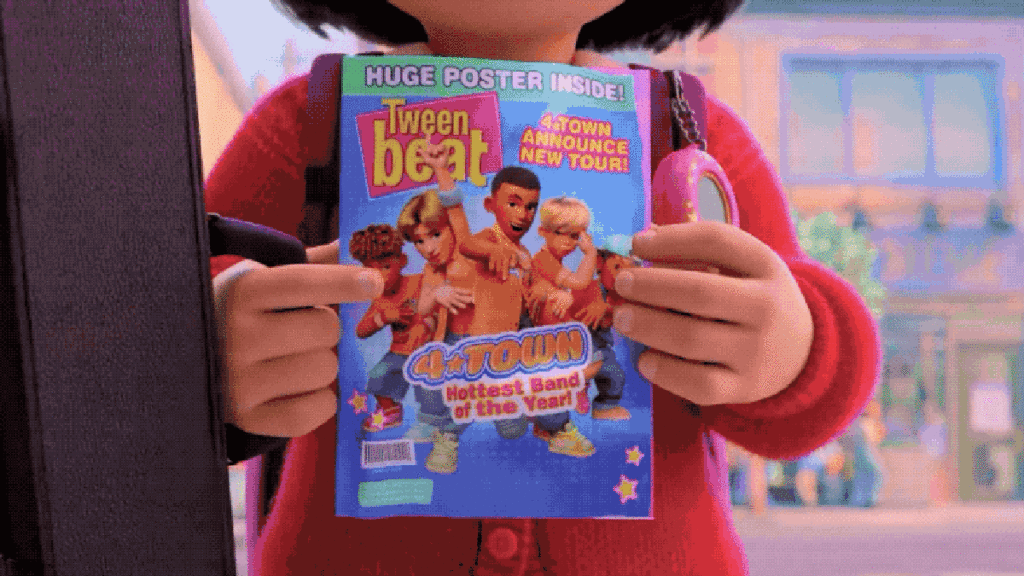

What works best about Turning Red is that it leans into its concept frequently. Each implementation really works, too.
The visual of the fluffy panda never grows old. So I’m expecting red panda ears and tails to be the next big thing at Disney theme parks.
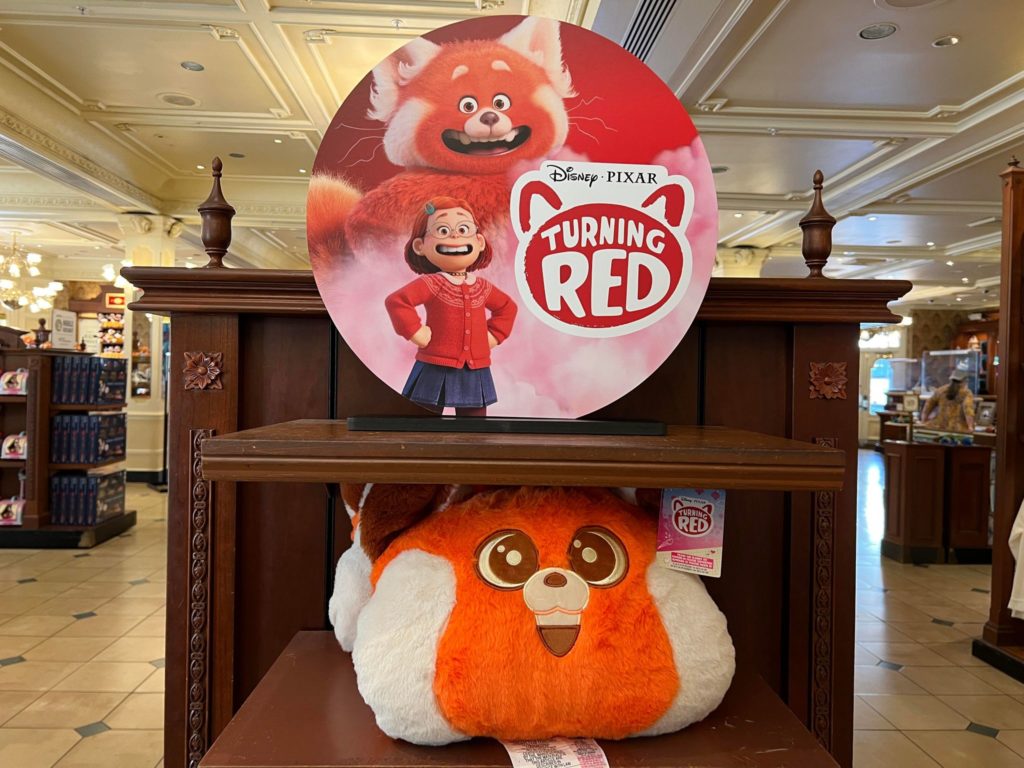

Also, the repeated boy band jokes play well, especially at the end, where the angels wind up hanging helplessly in the air. You’ll know it when you see it.
Similarly, I adore the interactions between the four female friends, each of whom possesses a distinct personality.
Another highlight involves the music. Billie Eilish and her brother, Finneas, wrote the songs, some of which are slyly hysterical.
Finally, the writing on Mei’s father is genuinely brilliant. He’s quietly the best character in the film, not counting Mei.


The one complaint I have about the film is that there’s no villain per se. Instead, it prioritizes mother/daughter conflict. And I didn’t care much for Ming Lee as a character.
Final Thoughts
I realize I’m not the target audience for this film. My wife, in between bursts of laughter, told me I’d laugh harder if I’d ever been a 13-year-old girl.


I’m sure she’s right. There’s a running gag about the best member of the boy band, at least to Mei.
I found these jokes harmless enough and even entertaining at times.
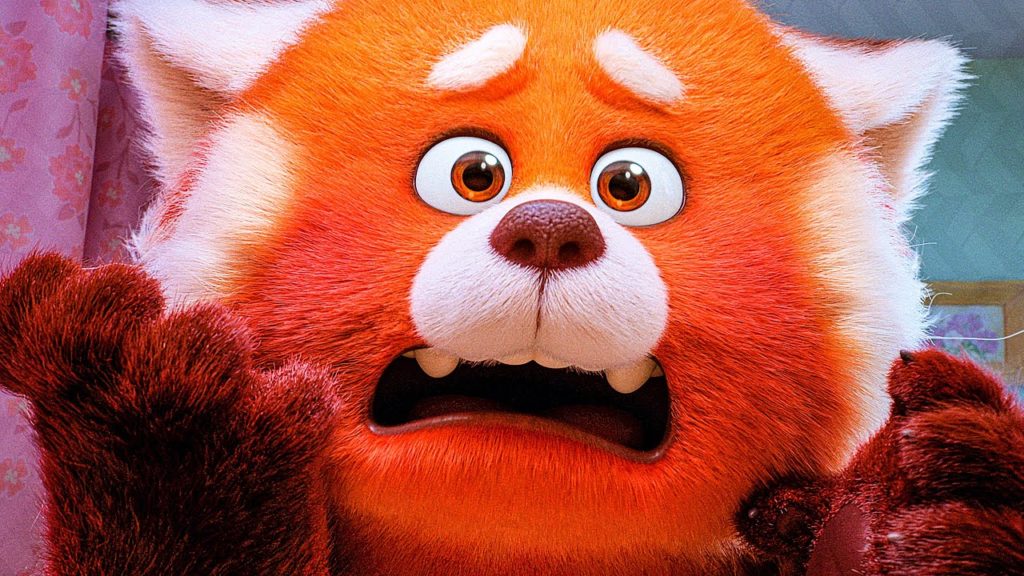

My wife laughed like George Carlin and Richard Pryor were trying to outdo one another.
Sorry, Robaire. I didn’t get it.
My favorite part of the film is something I cannot spoil here. Suffice to say that it takes place in a stadium, and it reminds me of Ghostbusters in a weird way.
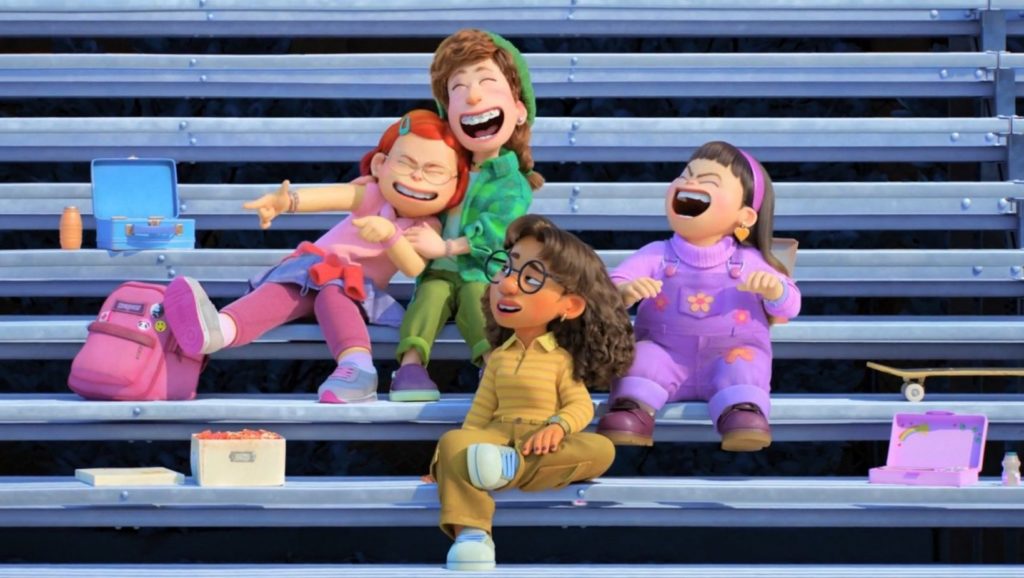

An unlikely turn of events leads to a huge comedic payoff, and an emotionally resonant one follows soon afterward.
The pacing in Turning Red is exceptional. By the end of the film, I feel like I have a firm grasp of who everyone is, a rare feat in modern cinema.


The other aspect I haven’t emphasized enough is how Toronto itself plays a factor in the story to the point where I wondered whether Scott Pilgrim might appear.
Pixar has built a fully immersive world here, one that I hope it explores in a sequel.
⭐️The SkyDome (now Rogers Centre)
Toronto’s beloved SkyDome also makes a comeback appearance as the venue for the sold-out stadium show for boy band, 4*Town.https://t.co/YtYFwuFxXC pic.twitter.com/KniJYjHick
— Toronto Star (@TorontoStar) March 11, 2022
Simply stated, the movie’s 110 minutes flew by, and I found myself wanting much more.
For this reason, I savored the completely superfluous but charming post-credits scene.
Turning Red is a movie I didn’t want to end. I’d like more of this please, Pixar.


